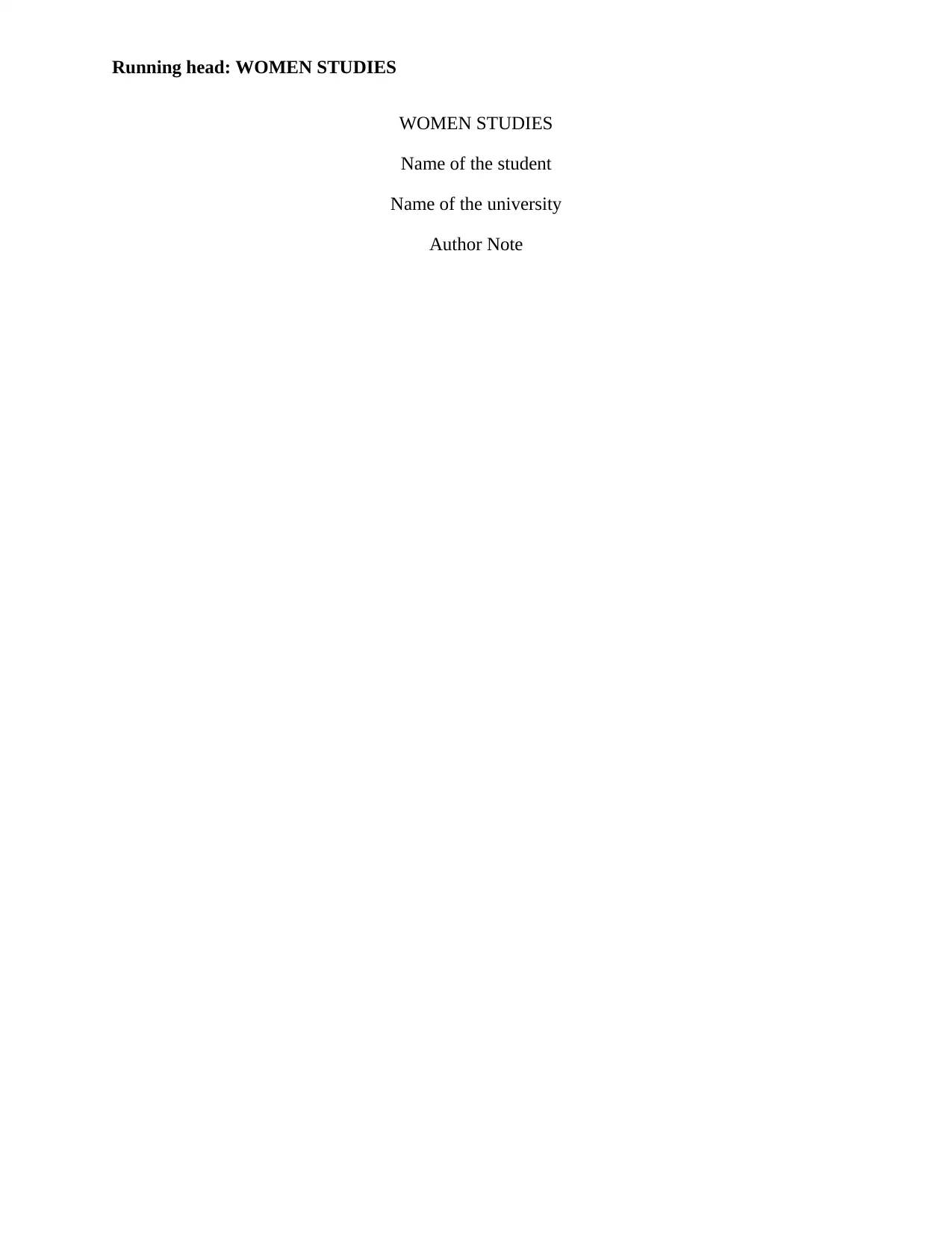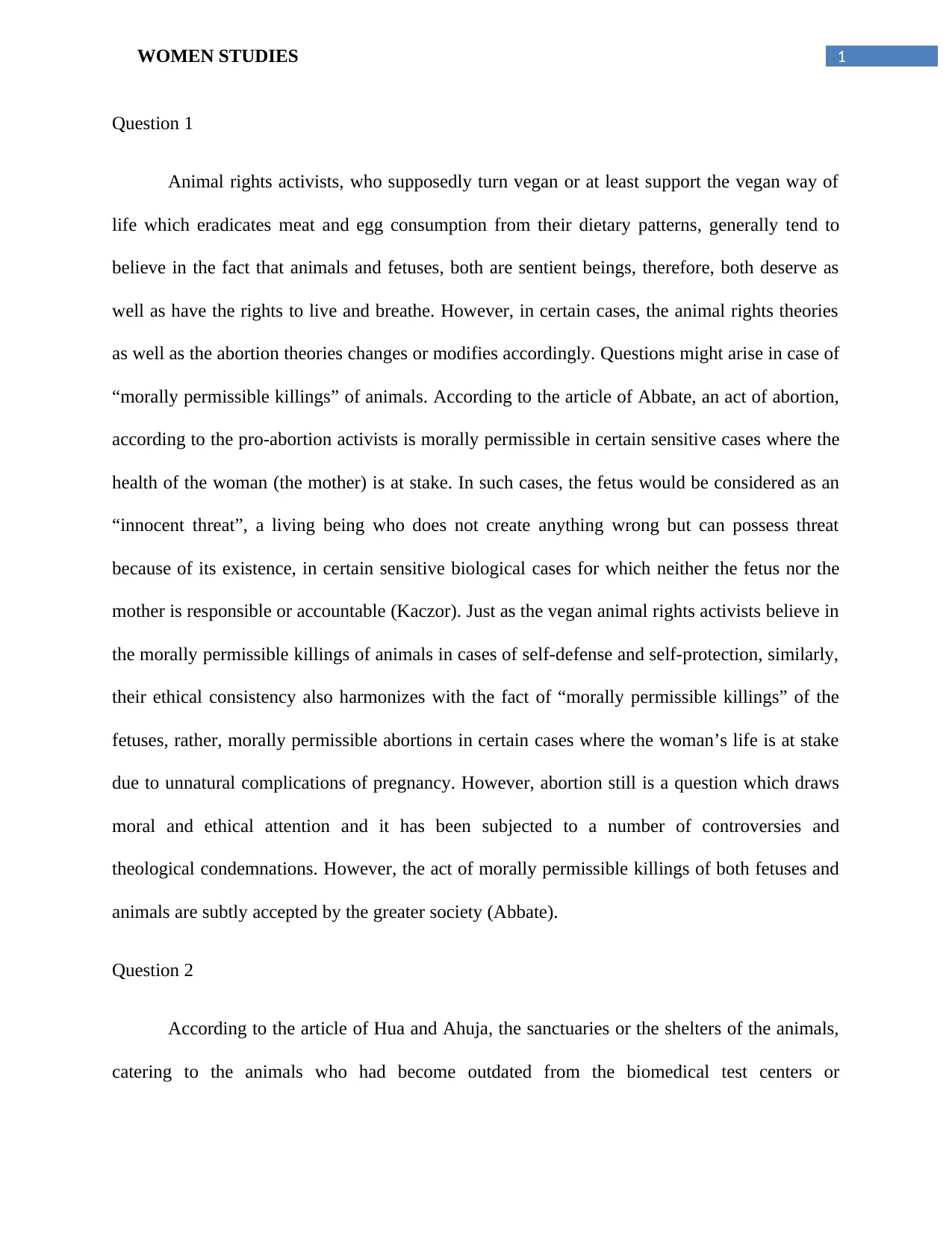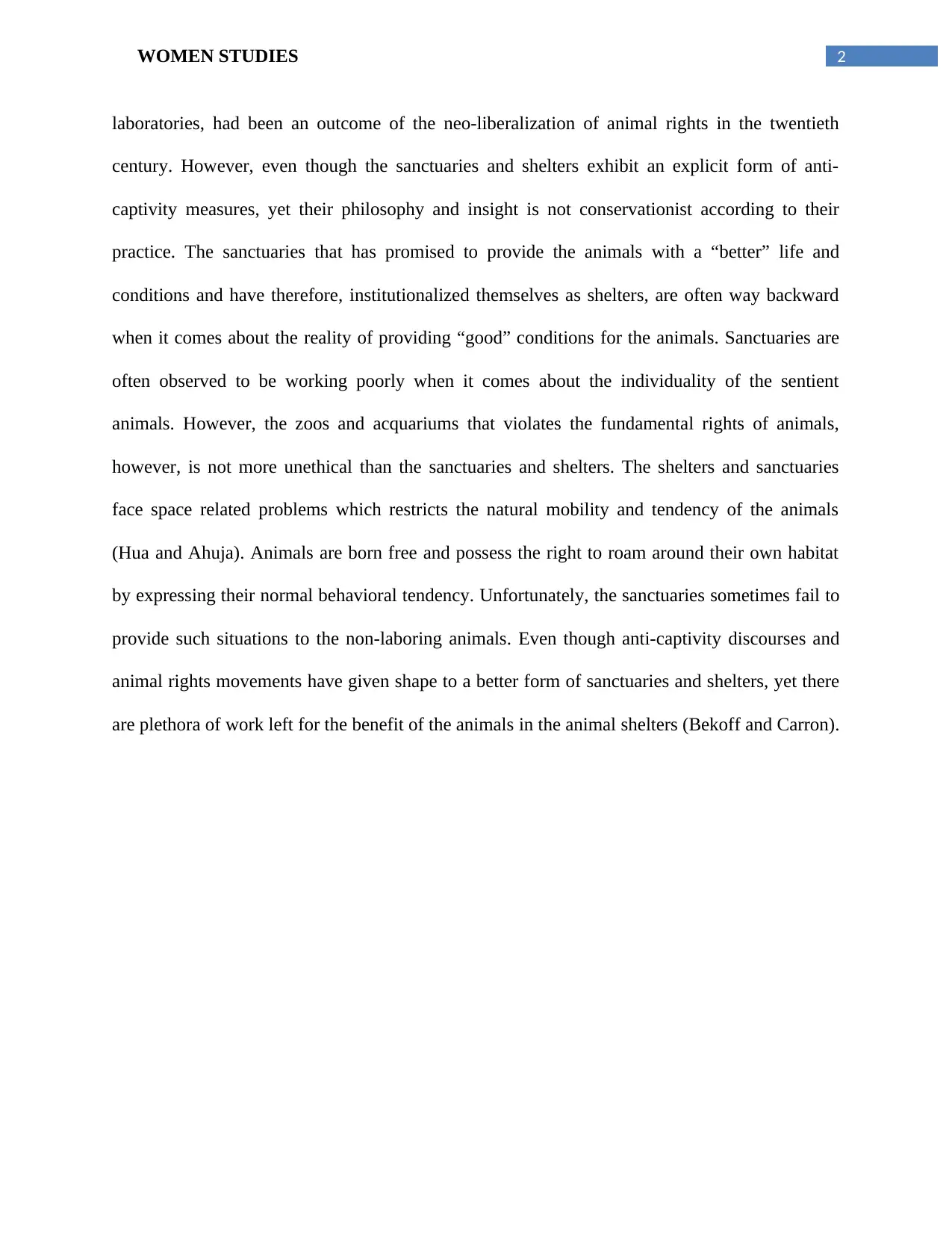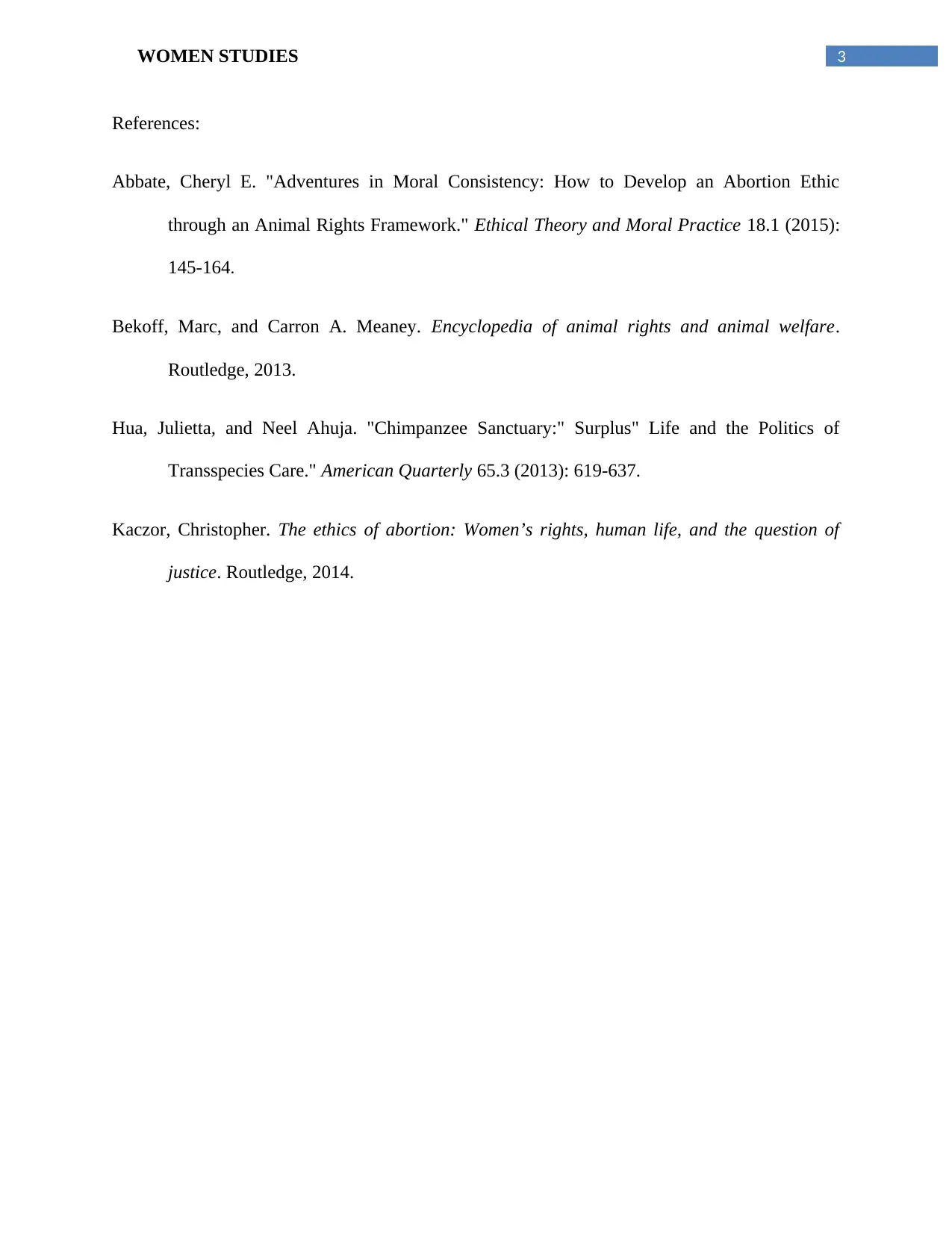Women Studies: A Comparative Analysis of Abortion and Animal Rights
VerifiedAdded on 2022/11/17
|4
|719
|383
Essay
AI Summary
This essay, submitted by a student for publication on Desklib, delves into the intricate ethical connections between animal rights and abortion. It examines the arguments of animal rights activists, particularly those with vegan viewpoints, who often equate the sentience of animals and fetuses, advocating for their right to life. The essay explores how these perspectives are applied to morally permissible killings, such as in cases of self-defense for animals or when a woman's life is at stake during pregnancy, drawing parallels between the two scenarios. Furthermore, the essay discusses animal sanctuaries and shelters, analyzing their impact in relation to the neo-liberalization of animal rights and the challenges they face in providing adequate conditions for the animals they house. The essay references key articles and viewpoints, including those of Abbate, Hua, Ahuja, Bekoff, Carron, and Kaczor, providing a comprehensive overview of the ethical and practical considerations surrounding animal rights and abortion.
1 out of 4







![[object Object]](/_next/static/media/star-bottom.7253800d.svg)